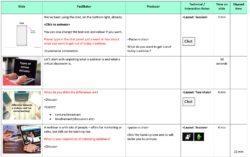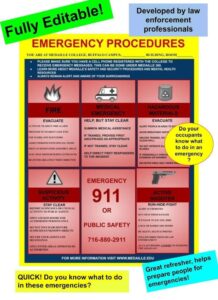Utilizing such a framework offers numerous advantages. It streamlines responses, saving valuable time and resources during crises. By clearly outlining pre-determined steps, it reduces errors and promotes consistent action across teams. Furthermore, it empowers personnel with the knowledge and confidence to handle emergencies effectively, fostering a sense of preparedness and minimizing potential panic or delays. The readily available information minimizes the impact of disruptions on overall productivity and operational continuity.

This structured approach to crisis management aids in developing comprehensive preparedness strategies. Key aspects to consider include identifying potential risks, outlining specific actions, assigning responsibilities, and establishing communication protocols. Effective implementation hinges on clear, concise language, accessible formatting, and regular review and updates to ensure ongoing relevance and accuracy.
Key Components of a Contingency Plan Quick Reference Guide
Effective contingency planning relies on a well-structured quick reference guide. This guide should contain essential elements to facilitate swift and informed decision-making during unforeseen events.
1. Purpose and Scope: A clear statement outlining the guide’s objective and the specific scenarios it addresses is crucial. This section defines the boundaries of the plan and its intended application.
2. Activation Triggers: Specific, measurable, achievable, relevant, and time-bound (SMART) criteria that dictate when the contingency plan should be activated. This ensures timely responses and avoids unnecessary deployment of resources.
3. Roles and Responsibilities: Clearly defined roles and responsibilities for individuals or teams involved in the response. This minimizes confusion and ensures accountability during critical moments.
4. Communication Protocols: Established methods for disseminating information internally and externally. This includes designated communication channels, key contacts, and reporting procedures.
5. Key Actions: A concise list of prioritized actions to be taken in response to the specific event. Steps should be presented in a logical sequence with clear instructions.
6. Resource Allocation: Identification of essential resources required for execution, including personnel, equipment, and budget. This ensures resources are readily available when needed.
7. Recovery Procedures: Steps required to return to normal operations after the event. This includes damage assessment, restoration of services, and post-incident review.
8. Review and Update Schedule: A defined schedule for regular review and updates of the guide to ensure its continued effectiveness and relevance in a dynamic environment.
A well-defined guide empowers organizations to navigate disruptions effectively. By incorporating these key components, organizations ensure preparedness, minimize negative impacts, and facilitate a swift return to normal operations.
How to Create a Contingency Plan Quick Reference Guide
Developing a robust quick reference guide requires careful planning and execution. A structured approach ensures clarity, completeness, and accessibility for all stakeholders.
1. Define Scope and Objectives: Clearly articulate the purpose of the guide and the specific scenarios it addresses. Defining the scope ensures the guide remains focused and relevant.
2. Identify Potential Disruptions: Conduct a thorough risk assessment to pinpoint potential threats and vulnerabilities. This informs the development of specific contingency plans.
3. Develop Actionable Steps: Outline specific, measurable, achievable, relevant, and time-bound (SMART) actions for each identified scenario. Clarity and conciseness are paramount.
4. Assign Roles and Responsibilities: Clearly define who is responsible for each action. This establishes accountability and minimizes confusion during critical moments.
5. Establish Communication Protocols: Determine communication channels, contact lists, and reporting procedures. Effective communication is crucial during a crisis.
6. Allocate Resources: Identify and allocate necessary resources, including personnel, equipment, and budget. Resource availability ensures timely and effective responses.
7. Design a User-Friendly Format: Prioritize clear, concise language, logical organization, and visual aids. Accessibility ensures rapid comprehension under pressure.
8. Implement Version Control and Review: Establish a system for version control and regular reviews. This ensures the guide remains up-to-date and relevant.
A meticulously crafted guide, regularly reviewed and updated, provides a crucial framework for effective responses to unforeseen events. This proactive approach minimizes disruptions, safeguards operations, and promotes organizational resilience.
Preparation for unforeseen circumstances is paramount for organizational resilience. A well-designed framework for rapidly accessible summaries of crucial procedures provides the foundation for effective responses to disruptions. This approach ensures clarity, consistency, and efficiency in managing crises, minimizing negative impacts on operations, personnel, and resources. Key elements include clearly defined roles, communication protocols, actionable steps, and resource allocation. Regular review and updates are essential to maintain relevance and effectiveness in a dynamic environment.
Proactive development and implementation of a robust, accessible framework demonstrate a commitment to preparedness and operational continuity. This investment in readiness empowers organizations to navigate challenges effectively, safeguarding stability and long-term success. A well-prepared organization is better positioned to weather unforeseen storms and emerge stronger, reinforcing the critical importance of comprehensive contingency planning in today’s complex landscape.



